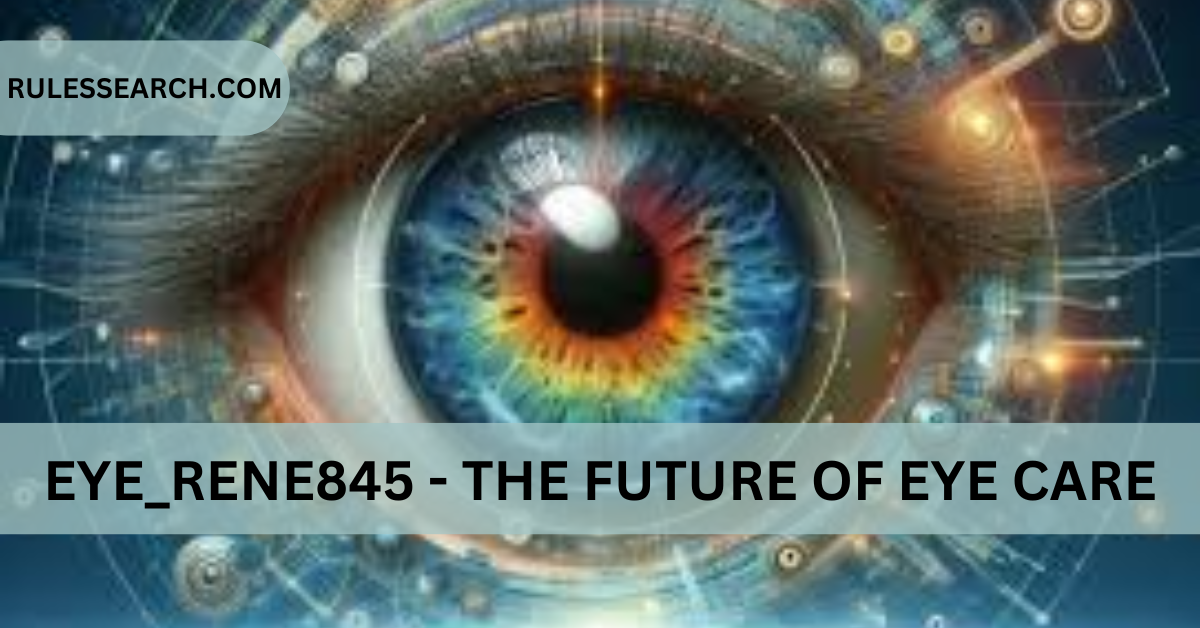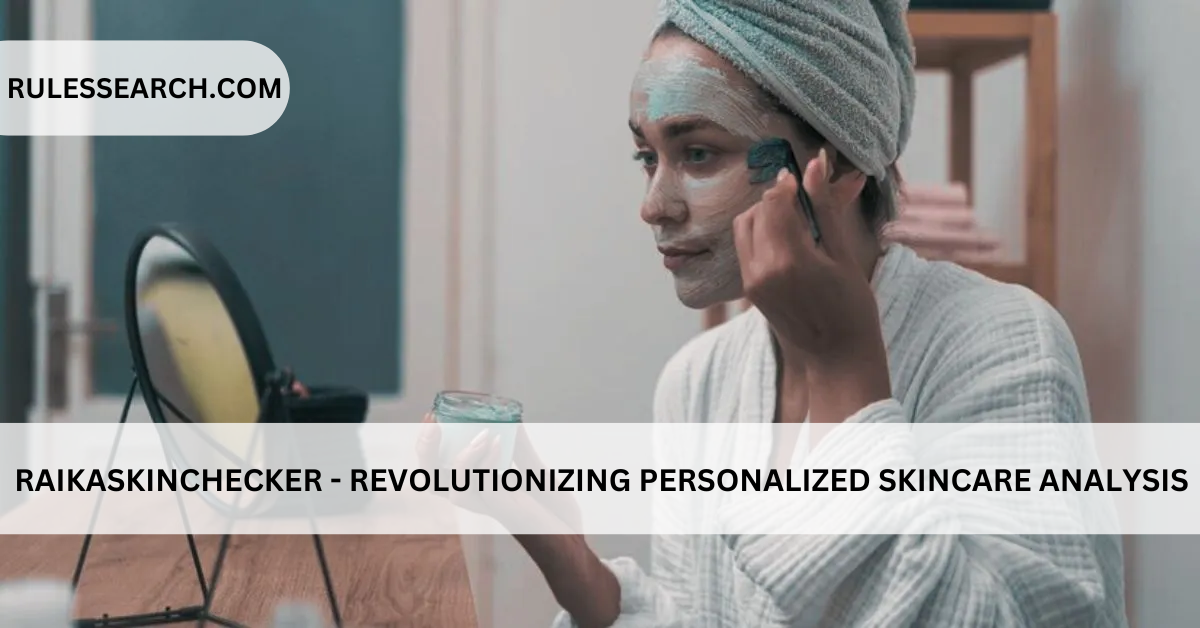In this comprehensive guide, we will explore the revolutionary advancements in eye care and how they are shaping the future of vision health. From the latest technologies to practical solutions for everyday eye care, this post will equip you with the knowledge to make informed decisions about your eye health.
Understanding Current Eye Health Challenges
Maintaining good eye health is essential, yet many people face challenges due to modern lifestyles, environmental factors, and genetic predispositions. Let’s delve deeper into the common issues affecting our eyes today.
Common Eye Problems Today
Digital Eye Strain
Digital eye strain, also known as computer vision syndrome, is a growing concern due to increased screen time. Symptoms include:
- Dry Eyes: Reduced blinking rates during screen use can lead to dryness and irritation.
- Blurred Vision: Extended focus on screens can strain the eyes, causing temporary blurred vision.
- Headaches: Eye strain often results in headaches due to muscle tension around the eyes.
Age-Related Macular Degeneration (AMD)
AMD is a leading cause of vision loss in people over 50. It affects the macula, the central part of the retina, leading to:
- Central Vision Loss: Difficulty with tasks like reading and recognizing faces.
- Distorted Vision: Straight lines may appear wavy or distorted.
- Dark or Empty Areas: Blind spots in the central vision can develop.
Glaucoma
Glaucoma involves damage to the optic nerve, often due to increased intraocular pressure. It can lead to:
- Peripheral Vision Loss: Gradual loss of side vision, which may go unnoticed until advanced.
- Tunnel Vision: In severe cases, vision may narrow to a central “tunnel.”
Cataracts
Cataracts cause the eye’s lens to become cloudy, affecting vision. Symptoms include:
- Blurry Vision: Objects may appear blurry or hazy.
- Difficulty with Night Vision: Increased glare from headlights or streetlights.
- Fading Colors: Colors may seem duller or less vibrant.
Environmental and Lifestyle Factors
Screen Time
Excessive screen time can exacerbate eye strain and lead to long-term issues:
- Blue Light Exposure: Screens emit blue light that may disrupt sleep patterns and contribute to eye strain.
- Posture Issues: Poor posture while using devices can contribute to neck and back pain, affecting overall comfort.
Pollution
Environmental pollutants can irritate the eyes and contribute to conditions like:
- Conjunctivitis: Inflammation of the lining of the eye and eyelid, causing redness and discharge.
- Allergic Reactions: Pollutants can trigger allergic reactions, leading to itchy, watery eyes.
Sun Exposure
UV rays from the sun can damage the eyes over time:
- Cataracts: Prolonged UV exposure can accelerate the development of cataracts.
- Macular Degeneration: UV rays can contribute to the risk of AMD.
Innovative Technologies in Eye Care
Advancements in technology are revolutionizing the field of eye care, providing new ways to diagnose, treat, and manage eye conditions. Here’s a closer look at some of the most exciting developments.
Advanced Diagnostic Tools
Ocular Imaging
Technologies like Optical Coherence Tomography (OCT) offer detailed images of the retina, allowing for:
- Early Detection: Identifying conditions such as AMD and diabetic retinopathy at an early stage.
- Monitoring: Tracking changes in the retina over time to assess the effectiveness of treatments.
Smart Contact Lenses
These innovative lenses are equipped with sensors and electronics to:
- Monitor Health: Track glucose levels for diabetes management or detect changes in eye health.
- Provide Data: Offer real-time feedback on various health metrics, improving personalized care.
AI in Eye Care
Artificial Intelligence (AI) is transforming eye care through:
- Image Analysis: AI algorithms can analyze eye scans to detect conditions with high accuracy.
- Predictive Analytics: AI can predict the likelihood of developing certain eye diseases based on patient data.
Treatment Innovations
Laser Surgery
Laser treatments have become a standard option for vision correction:
- LASIK: Reshapes the cornea to correct nearsightedness, farsightedness, and astigmatism.
- PRK: A similar procedure to LASIK, but with different techniques for reshaping the cornea.
Gene Therapy
Research is exploring how gene therapy can:
- Correct Genetic Mutations: Address inherited conditions like Leber congenital amaurosis by altering or replacing defective genes.
- Restore Vision: Potentially restore vision by targeting the underlying genetic causes of eye diseases.
Drug Delivery Systems
New methods for delivering medication directly to the eye are:
- Implantable Devices: Tiny implants that release medication over an extended period, reducing the need for frequent eye drops.
- Nanotechnology: Using nanoparticles to deliver drugs more effectively and safely to specific eye tissues.
Preventive Measures and Personalization
Customized Eye Care
Personalized treatment plans are becoming more prevalent:
- Genetic Testing: Analyzing genetic predispositions to tailor treatments and preventive measures.
- Environmental Assessments: Considering individual environmental factors to provide customized care recommendations.
Wearable Technology
Advancements in wearable tech are enhancing eye care:
- Health Monitors: Devices that track eye health metrics and provide real-time updates.
- Augmented Reality: AR glasses that assist with vision correction and enhance daily activities.
Lifestyle Adjustments
Simple lifestyle changes can make a big difference:
- Regular Exercise: Physical activity improves circulation, which benefits eye health.
- Proper Nutrition: A diet rich in antioxidants and vitamins supports overall vision health.
Practical Solutions for Everyday Eye Health
Incorporating practical strategies into your daily routine can help maintain eye health and prevent common issues.
Daily Habits to Support Eye Health
Regular Breaks
Adopting the 20-20-20 rule can reduce eye strain:
- Every 20 Minutes: Take a 20-second break.
- Look 20 Feet Away: Focus on something 20 feet away to relax the eyes.
Protective Eyewear
Using appropriate eyewear can protect against damage:
- Sunglasses: Choose glasses with UV protection to shield your eyes from harmful rays.
- Safety Glasses: Wear safety glasses during activities that pose a risk of eye injury.
Healthy Diet
Eating a balanced diet supports eye health:
- Vitamin-Rich Foods: Include foods high in vitamins A, C, and E.
- Omega-3 Fatty Acids: Found in fish, these can help prevent dry eyes and age-related conditions.
When to See an Eye Specialist
Routine eye exams are crucial for maintaining eye health:
- Annual Check-Ups: Regular visits can help detect issues early and prevent complications.
- Symptom Management: If you experience symptoms like sudden vision changes or persistent discomfort, consult an eye specialist promptly.
Conclusion
The advancements in eye care, particularly through innovations like those highlighted in eye_rene845, are revolutionizing how we approach vision health. By embracing these cutting-edge technologies and adopting practical strategies, you can take proactive steps to protect and enhance your vision. Stay informed about the latest developments related to eye_rene845 and integrate these insights into your eye care routine for a healthier and clearer future.
FAQs
1. What is digital eye strain, and how can I prevent it with eye_rene845?
Digital eye strain, also known as computer vision syndrome, is caused by extended screen use. To mitigate the effects of digital eye strain and incorporate insights from eye_rene845, consider taking regular breaks, adjusting screen settings for optimal comfort, and using artificial tears to alleviate dryness.
2. How does age-related macular degeneration (AMD) affect vision, and how can eye_rene845 help?
Age-related macular degeneration (AMD) affects the macula, the central part of the retina, leading to blurred or distorted central vision. Utilizing advanced strategies from eye_rene845 for early detection through regular eye exams and lifestyle changes can help manage AMD and slow its progression.
3. What are the benefits of advanced diagnostic tools like OCT, as discussed in eye_rene845?
Advanced diagnostic tools like Optical Coherence Tomography (OCT) offer high-resolution images of the retina, allowing for early detection of conditions such as AMD and diabetic retinopathy. eye_rene845 highlights how OCT helps monitor disease progression and evaluate treatment effectiveness.
4. How do smart contact lenses work, and what insights does eye_rene845 provide?
Smart contact lenses, equipped with embedded sensors, monitor various health metrics such as glucose levels. According to eye_rene845, these lenses offer real-time data to effectively manage conditions and track overall eye health.
5. What is gene therapy, and how might it help with eye conditions as per eye_rene845?
Gene therapy involves modifying or replacing defective genes to address genetic disorders. eye_rene845 explores how gene therapy can target inherited eye conditions like Leber congenital amaurosis by correcting genetic issues and potentially restoring vision.
6. What lifestyle changes can support long-term eye health, and how does eye_rene845 contribute?
To support long-term eye health, eye_rene845 recommends incorporating habits such as taking regular eye breaks, wearing UV-protective sunglasses, and consuming a diet rich in nutrients like vitamins A, C, and E, and omega-3 fatty acids.
7. When should I seek an eye specialist, according to eye_rene845?
Consult an eye specialist for routine check-ups and if you experience symptoms such as sudden vision changes, persistent eye discomfort, or visual disturbances like flashes of light or floating spots. eye_rene845 emphasizes the importance of early intervention for optimal eye health.
8. How can artificial intelligence improve eye care, based on insights from eye_rene845?
Artificial intelligence (AI) enhances eye care by analyzing eye images with high precision, detecting conditions earlier, and predicting potential issues based on patient data. eye_rene845 illustrates how AI contributes to improved diagnostic accuracy and personalized treatment plans.
9. What are some preventive measures for protecting against environmental damage to eyes, as highlighted in eye_rene845?
Preventive measures include wearing protective eyewear, reducing screen time, avoiding excessive sun exposure, and managing environmental irritants like air pollution. eye_rene845 provides strategies to minimize eye damage and maintain eye health.
10. How do laser surgeries like LASIK improve vision, and what does eye_rene845 say about this?
Laser surgeries such as LASIK reshape the cornea to correct refractive errors like nearsightedness, farsightedness, and astigmatism. eye_rene845 explains how these procedures can reduce or eliminate the need for glasses or contact lenses and improve overall vision.



